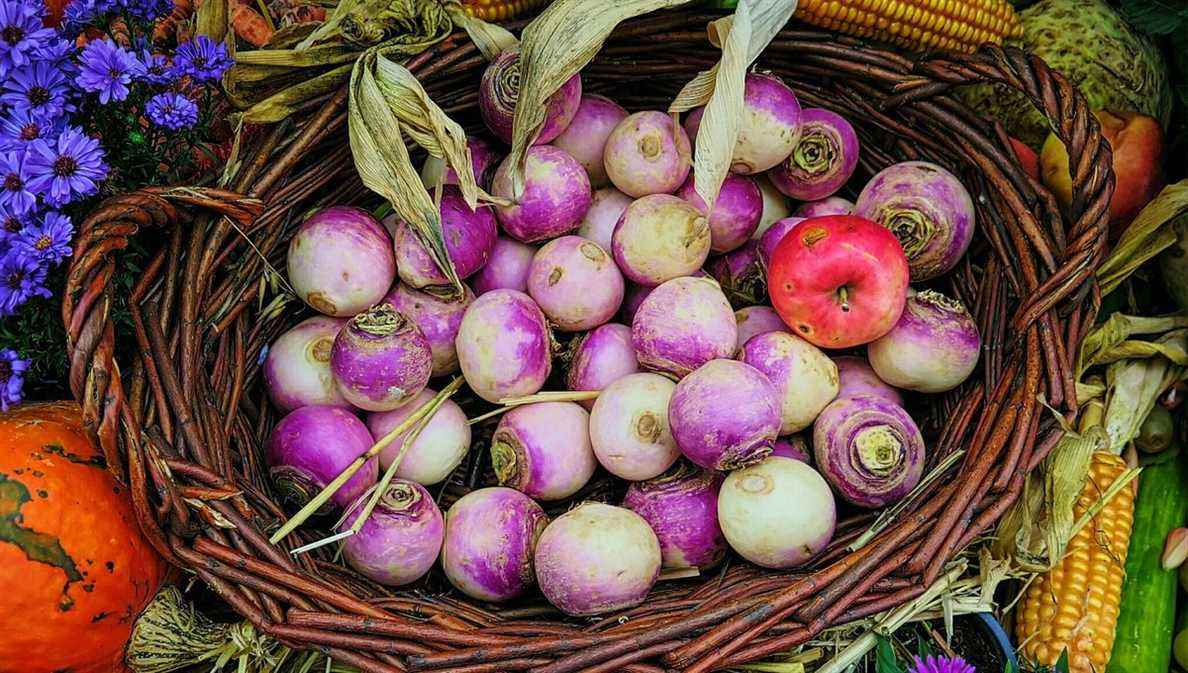The turnip is from the same family as the wallflowers
We only see the root but look at the turnip flowers and we are less surprised to learn that it is part of the same family, wallflower, and rapeseed, the brassica family. Its vernacular name, in other words its popular name turnip, comes from napus in Latin, but its scientific name is Brassica Rapa which you can take out occasionally if you want to show off at work.
– CC BY-SA 3.0, https://commons.wikimedia.org/w/index.php?curid=96719
King of gardens, dethroned by the potato
The turnip was the king of gardens before the arrival of the potato which dethroned it. Rustic, easy to grow even in harsh soil, it gave food in winter, a big plus when our ancestors struggled. There are more than 150 different varieties in Europe, including 25 in France, for example the well-known golden ball, the Montesson turnip, a turnip from the Paris region, and the top of the top; Nancy turnip with whole leaves, tasty and above all very resistant to cold.

too young, it is bland, too old, it is strong: choose well!
The turnip is found in many dishes, it flavors soups for example, even if it is necessary to aim well because too young it is a little bland, and too old it is a little strong. It is found in pot au feu, in lamb navarin. He even has his own dish, naveline, a turnip sauerkraut with bacon, which is well known in Lorraine. On the health side, the turnip is of course rich in fibre, it is good, very rich in potassium and vitamin C and, if you are on a diet, it has a big advantage: it is very low in calories. Cooking is done with a few ingredients like turnips, but it is mostly done with the heart
